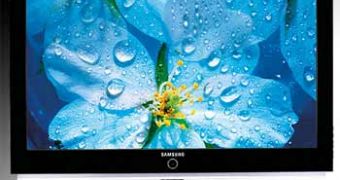According to Displaybank, LCD TVs equipped with LED BLUs (backlight units) will reach 8% of the total market by 2011, in the detriment of CCFLs (cold cathode fluorescent lamps) TVs. Allen Ji, a senior researcher at Displaybank, stated that LED-backlit LCD TV would experience a rapid increase in market penetration, from 0.1% in 2008 to 8% in 2011, but there would be differences in each maker's LED BLU equipped ratio, which would depend on the market next year.
The prices for LCD TVs have been dropping lately, and makers are compelled to work out product differentiation strategies, and a promising one seems to be LED-backlighting, says Displaybank. The research firm adds that the LED-backlit LCD TV market is expected to be driven by the latest trends to design slimmer and more eco-friendly TV products, as well as by LED makers' continued search for new hot applications for handsets.
Although LED sees growing penetration in many applications, it seems that LED driver IC designers are mainly focused on the low-end of the market, rather than on trying to make their products fit for notebooks or LCD TV backlight applications. If they want to get their problems solved, LED manufactures should make a switch, some industry players commented.
Still, there are LED driver IC design firms that target notebook and LCD TV applications, but, since their products need customers' validation, they will make a stronger penetration on the market during the following years rather than in 2008. A few Taiwanese LED driver IC design companies have already complained about some negative results and share price, which are supposed to come from a possible oversupply in the second half of 2008.
Also, LED makers consider the potential sales contribution from notebook applications might not be as high as stated. LED backlight units (BLU) need less LED drivers than estimated in the past, which means that even these segments will grow a little slower than predicted. The share prices of Macroblock and Silicon Touch Technology have been going down this year, and the low Q2 results bid for even lower expectations for the third quarter.

 14 DAY TRIAL //
14 DAY TRIAL //